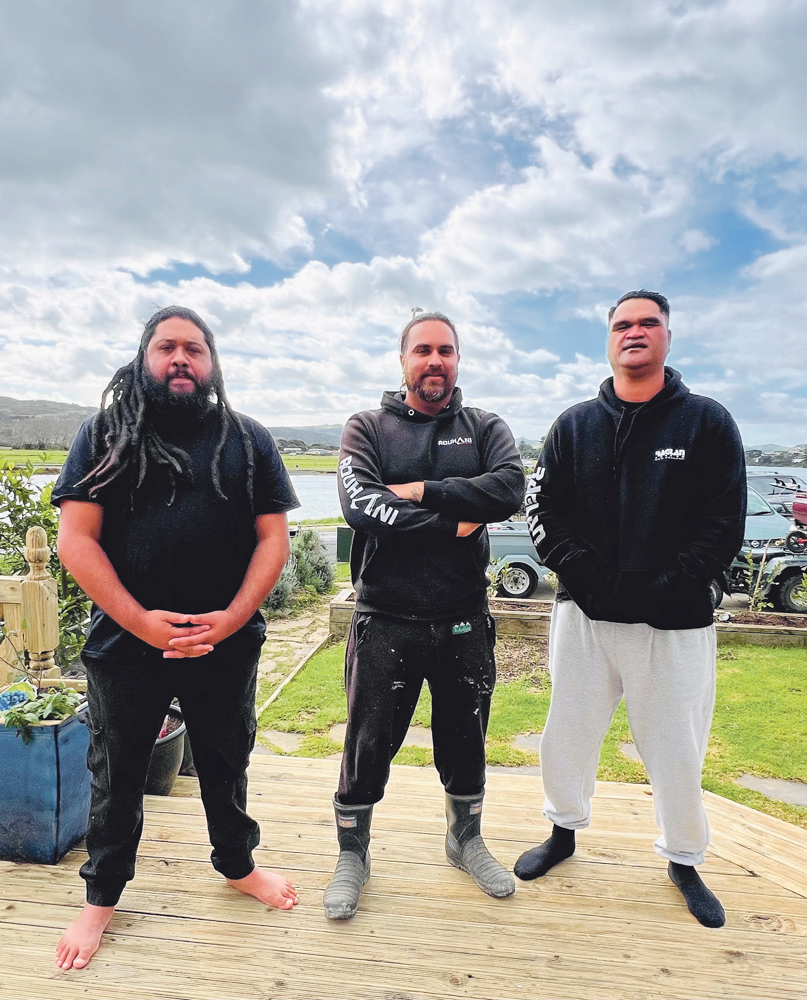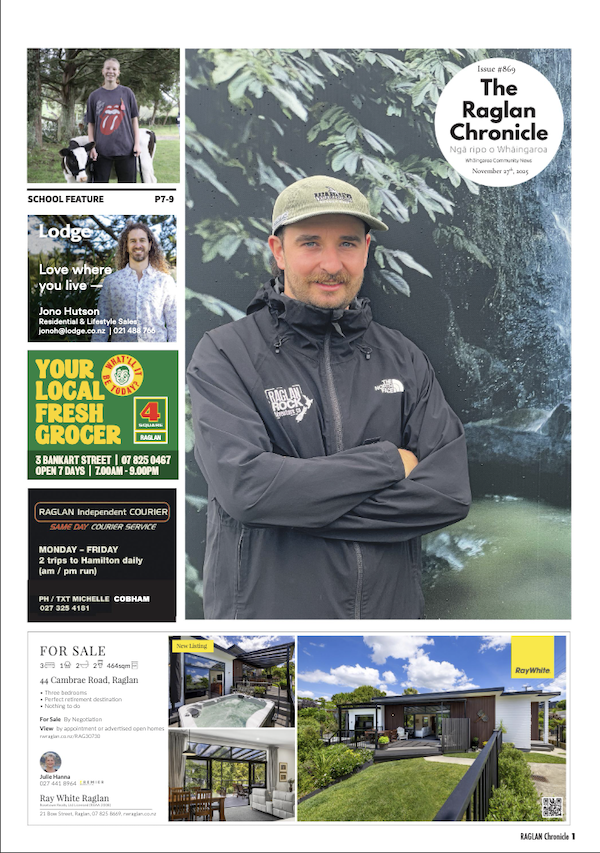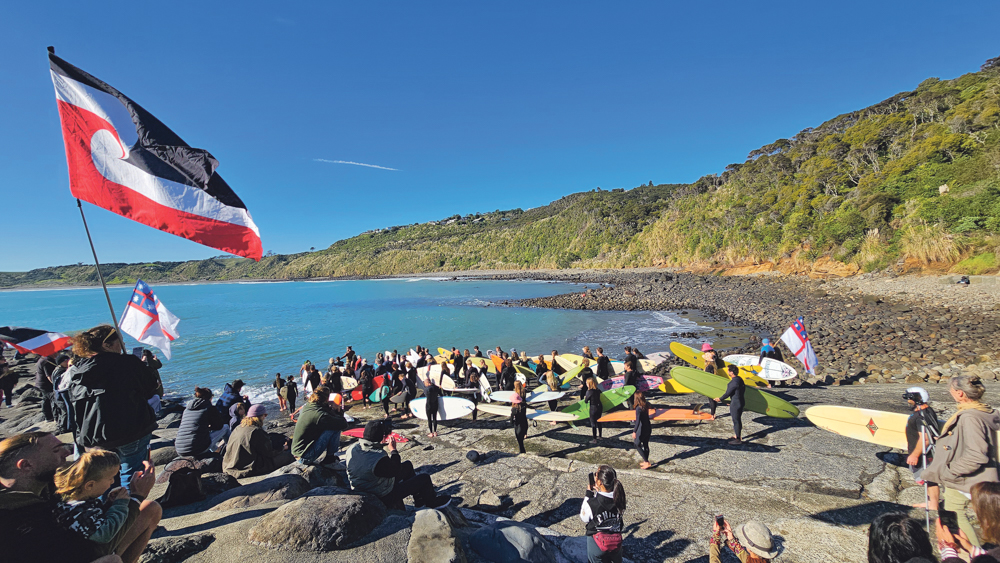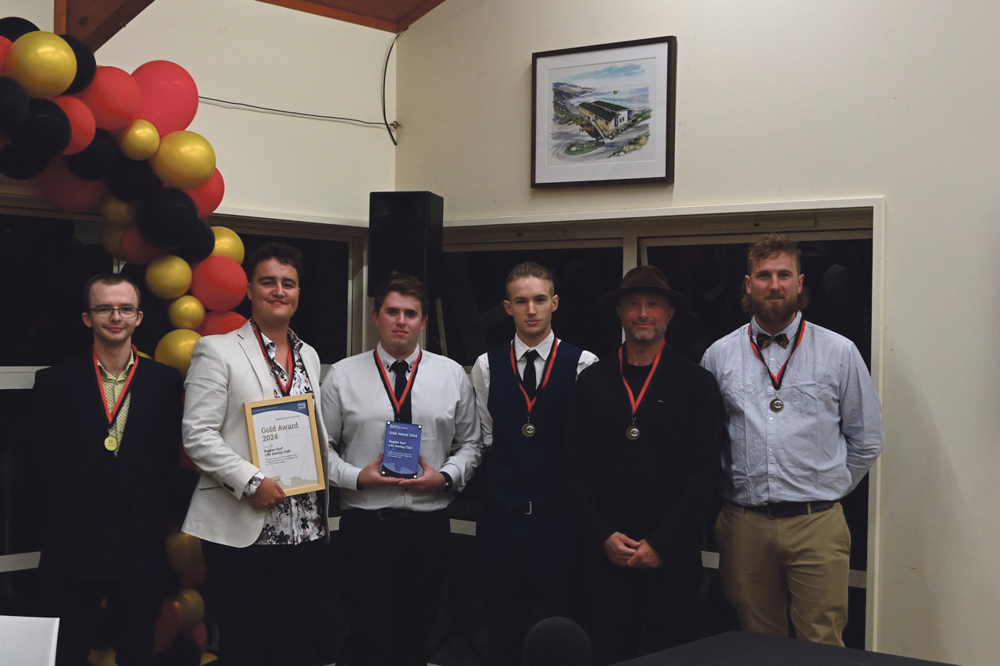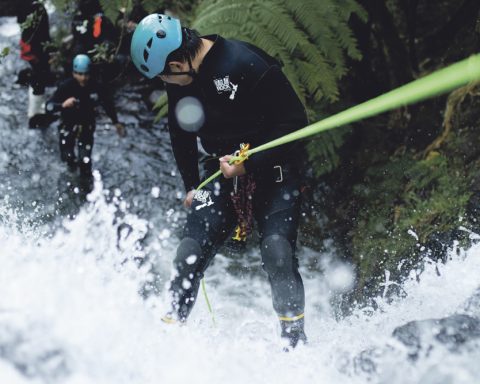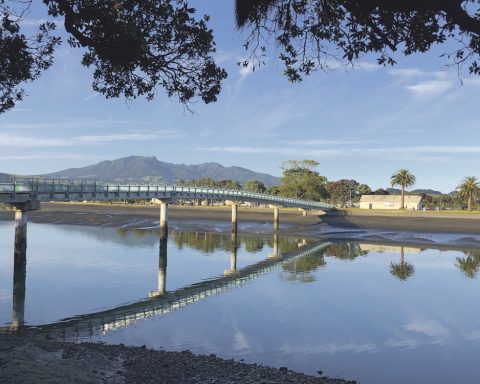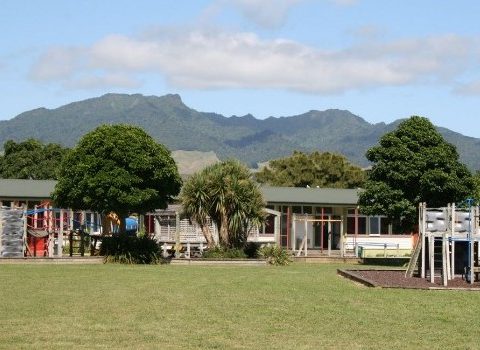The theme for Matariki ki Whaingaroa 2025 is stories of people and place. Born and bred in Whaingaroa, local carver Raj Irving has always travelled pathways which explore whakapapa and sense of identity in Aotearoa.
There are many threads to Raj’s journey. The son of an Indian mother and Pākehā father, Raj’s parents first met in Singapore. Surviving odds of distance and family opposition, Raj’s parents married and settled in Whaingaroa.
Raj was always going to be at home in the carving workshop. His late father Geoff, a gifted woodcarver and sculptor, was the woodwork teacher at Raglan Area School from 1985-1999.
Prominent local carver Kawharu Greensill has been central to the carving journeys of many in Whaingaroa. For Raj, it was Kawharu who “fortified his direction in ngā toi Māori and ensured he remained true to the pathway”.
Raj trained as a secondary school teacher, creating and teaching the whakairo programme at Fairfield College for eight years. During this time Raj also completed his Master of Applied Indigenous Studies at Te Wānanga o Aotearoa.
Providing an opportunity to explore whakapapa, identity, and connection, Raj says his masters was “a space to connect with other artists within ngā toi Māori and explore his place within Te Ao Māori”.
The opportunity to explore whakapapa through his carving takes on more significance as Raj shares about his Indian heritage. His Mum, Leela, was born in Singapore. Her family included indentured labourers’, forced out of Southern India by the British to work Malaysian rubber plantations in the late 1800s and early 1900s.
With links to their Indian heritage severed in this way, Raj says “their identity as an Indian whānau in Aotearoa has never fitted the traditional mould”.
Raj often reflects on what life must have been like for his Mum as the only Indian person in Whaingaroa in the 1980s. “ My Mum went from being surrounded by family, bright lights and sounds of the city, to a quiet rural New Zealand town. She still managed to share her love of cooking and colourful saris within the community.”
Now deeply immersed in themes of connection and identity, Raj currently teaches the Kāwai Raupapa – Certificate in Māori and Indigenous Art – Carving at Te Wānanga o Aotearoa in Mangere.
After seeing his students’ at Fairfield College complete their journeys from Year’s 9 through to 13, including having some exhibit at the pinnacle Ringa Toi exhibition in Wellington, Raj felt a sense of having come full circle.
For him, the shift into adult learning was an opportunity to “fully focus on the teaching of his artform, as well as pass on skills he has learnt through whakairo”.
Connections to Whaingaroa have followed Raj in his new mahi. Local carver Tare Kereopa is often with Raj in class, helping tauira build their confidence to work with the chisels. Local street artist Dallas Mihinui, who Raj first met when teaching at Fairfield College, is also a tauira in Raj’s class.
Raj, Tare and Dallas are all contributing to the Matariki ki Whaingaroa 2025 art exhibition.
Raj lives with his wife and two young sons in the house built by his father. A carving hanging on their wall faces out to Papahua. The carving incorporates Lord Ganesha, the clearer of paths, who in Indian culture is depicted as an elephant.
For Raj, this powerful carving was a token of appreciation to his mother and pays homage to his ancestry – “a carver with Indian whakapapa who has trained in whakairo Māori”.
The Matariki ki Whaingaroa art exhibition runs from Friday June 20th to Wednesday, July 2nd at the Raglan Old School Arts Centre.
by Michelle Levy
